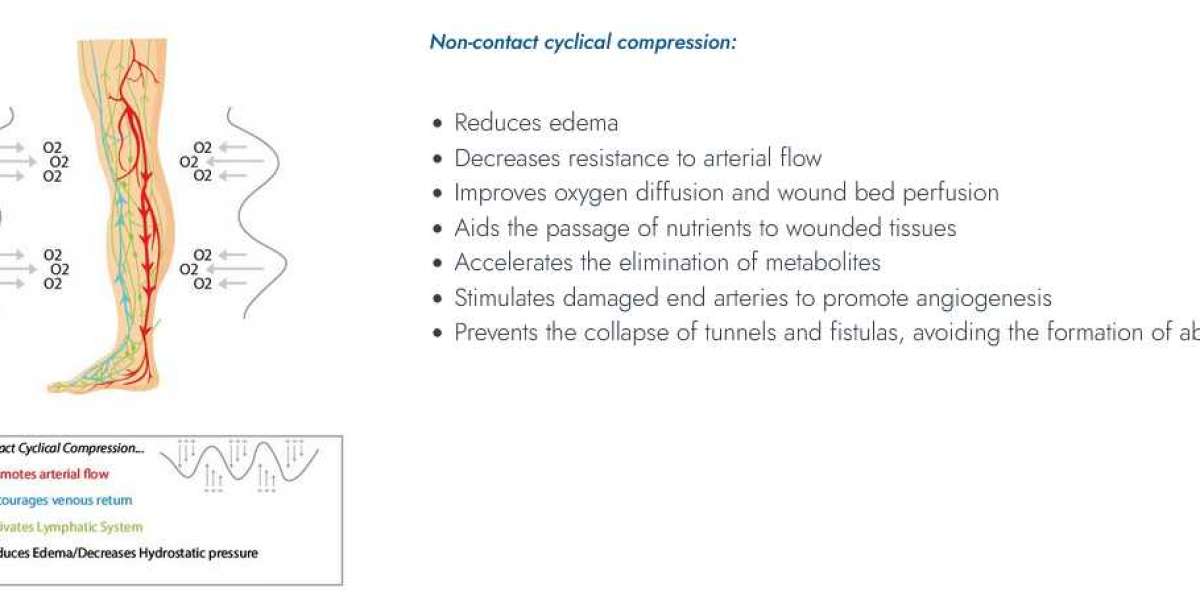Among the various types of leg ulcers, diabetic leg ulcers and venous leg ulcers are particularly prevalent and pose unique challenges for patients and healthcare professionals. In this article, we will delve into the characteristics, causes, and management of diabetic leg ulcers and venous leg ulcers, explicitly focusing on venous stasis and venous ulcers.
Diabetic Leg Ulcers
Diabetic leg ulcers are chronic wounds that commonly occur in individuals with diabetes. Diabetes is a metabolic disorder that affects the body's ability to regulate blood sugar levels. Prolonged periods of high blood sugar can lead to a variety of complications, including peripheral neuropathy and impaired blood circulation. These factors contribute to the development of diabetic leg ulcers.
Minor cuts, blisters, or abrasions may go unnoticed, leading to the formation of ulcers. Additionally, diabetes can cause blood vessels to narrow and become damaged, compromising blood flow to the legs and feet. Poor circulation hinders the body's healing ability, making it challenging for diabetic leg ulcers to close and properly heal.
Venous Leg Ulcers: The primarily associated with venous insufficiency
Venous leg ulcer, on the other hand, is primarily associated with venous insufficiency. Venous insufficiency occurs when the valves in the veins of the legs fail to function correctly, leading to blood pooling in the lower extremities. This pooling increases pressure in the veins, causing inflammation and skin changes that can progress to ulceration.
Venous leg ulcers typically occur around the ankles and are characterized by a shallow, irregular shape with a red or yellowish base. The skin surrounding the ulcer may be discolored and exhibit signs of venous stasis dermatitis, such as edema, pigmentation changes, and eczematous rashes.
Venous Stasis Ulcers
Venous stasis ulcer is a subtype of venous leg ulcers that result from prolonged venous insufficiency. The skin in the affected area may become leathery and discolored, and the ulcers often have a weeping or wet appearance due to fluid accumulation.
Venous stasis ulcer is a subtype of venous leg ulcers that result from prolonged venous insufficiency.
Treatment for venous stasis ulcers focuses on improving venous circulation and addressing the underlying cause of venous insufficiency. Compression therapy, which involves compression stockings or bandages, is a cornerstone of management. Elevation of the legs and lifestyle modifications, such as regular exercise and weight management, are crucial in preventing and managing venous stasis ulcers.
Venous Ulcers
Venous ulcer, including venous stasis ulcer, results from chronic venous insufficiency. In addition to compression therapy and lifestyle modifications, advanced wound care may be necessary to promote healing. Topical dressings, debridement of nonviable tissue, and infection control are integral components of the wound care regimen for venous ulcers.
Conclusion
In conclusion, diabetic leg ulcers and venous leg ulcers, particularly venous stasis ulcers and venous ulcers, present significant challenges in both prevention and management. Individuals with diabetes must prioritize foot care to reduce the risk of developing diabetic leg ulcers. At the same time, those with venous insufficiency should adopt measures to improve venous circulation and reduce the likelihood of venous leg ulcers.
Early detection and intervention are crucial for successful outcomes in both cases. Collaboration between patients, healthcare professionals, and specialists in wound care is essential to develop comprehensive treatment plans tailored to the unique characteristics of each ulcer. Individuals affected by these chronic wounds can receive the care and support needed to enhance their overall well-being and quality of life through a multidisciplinary approach.








